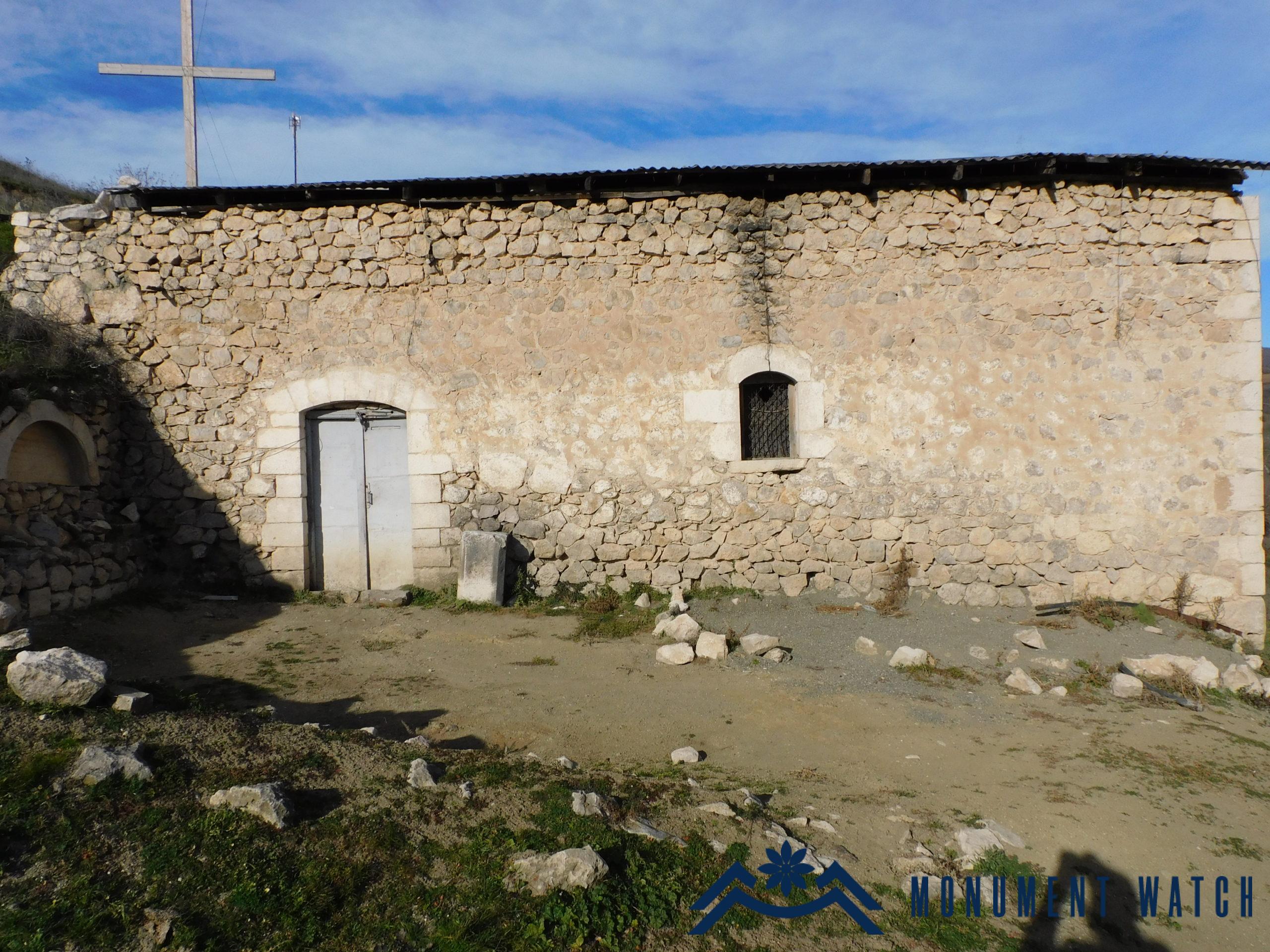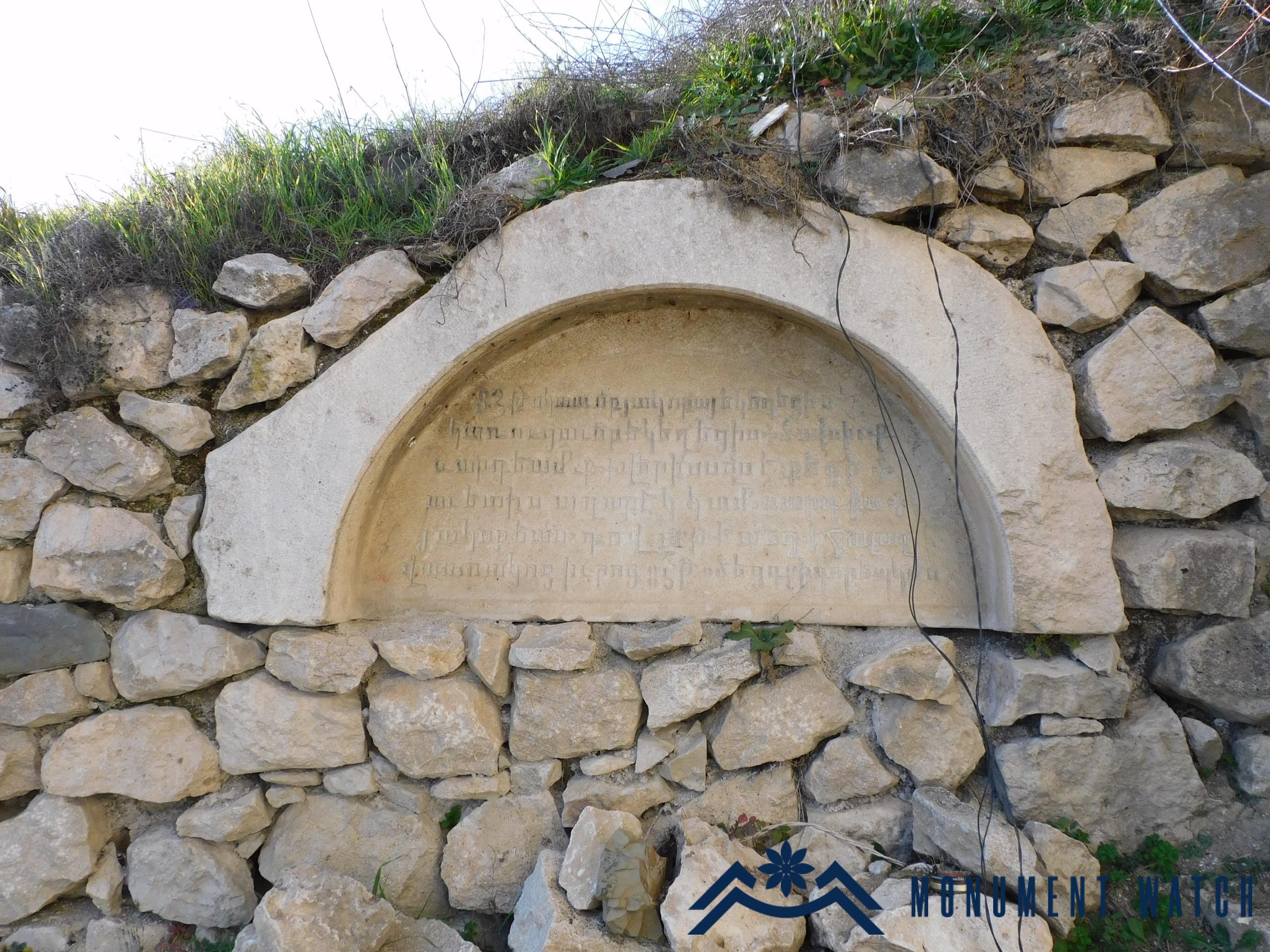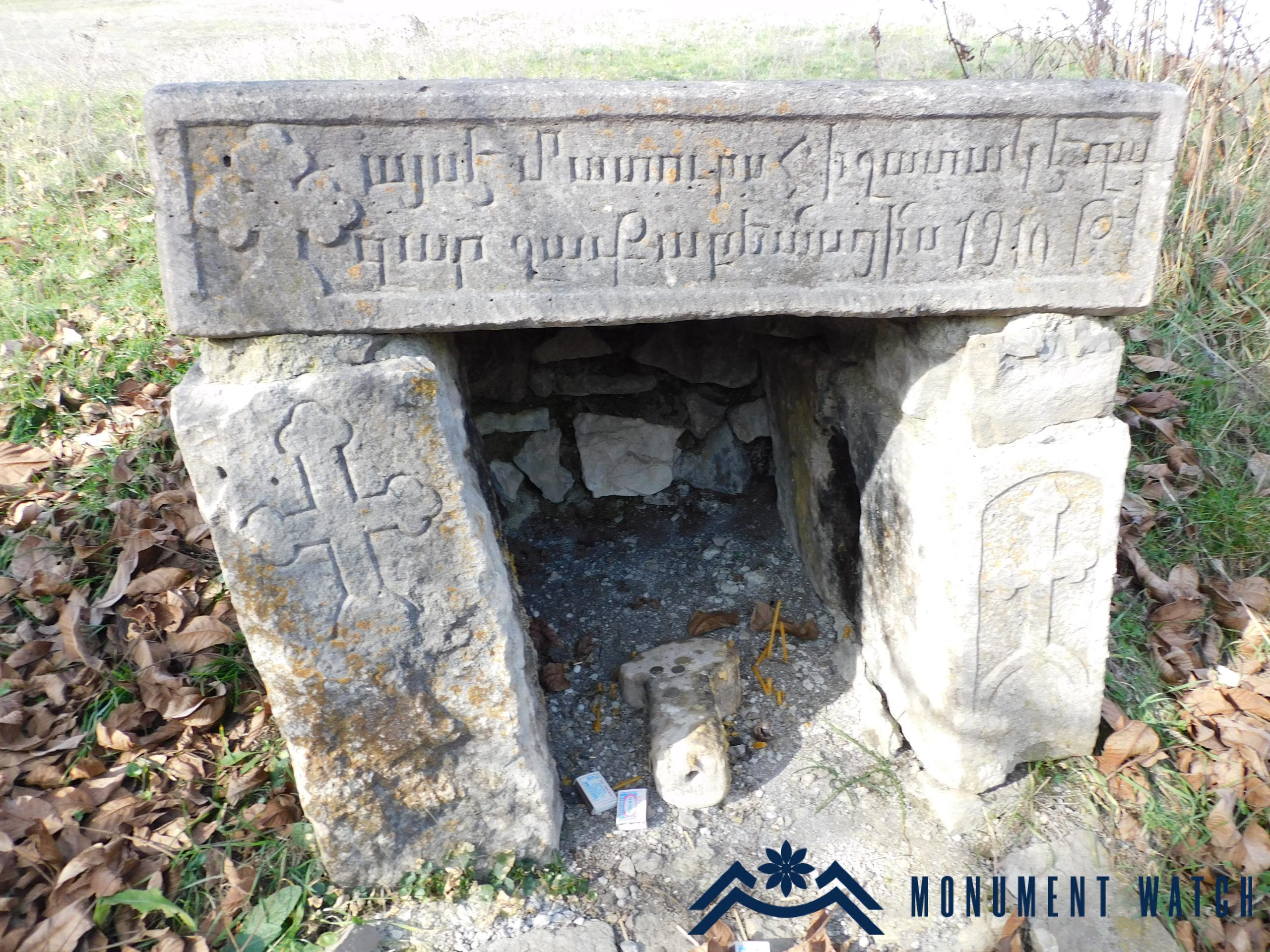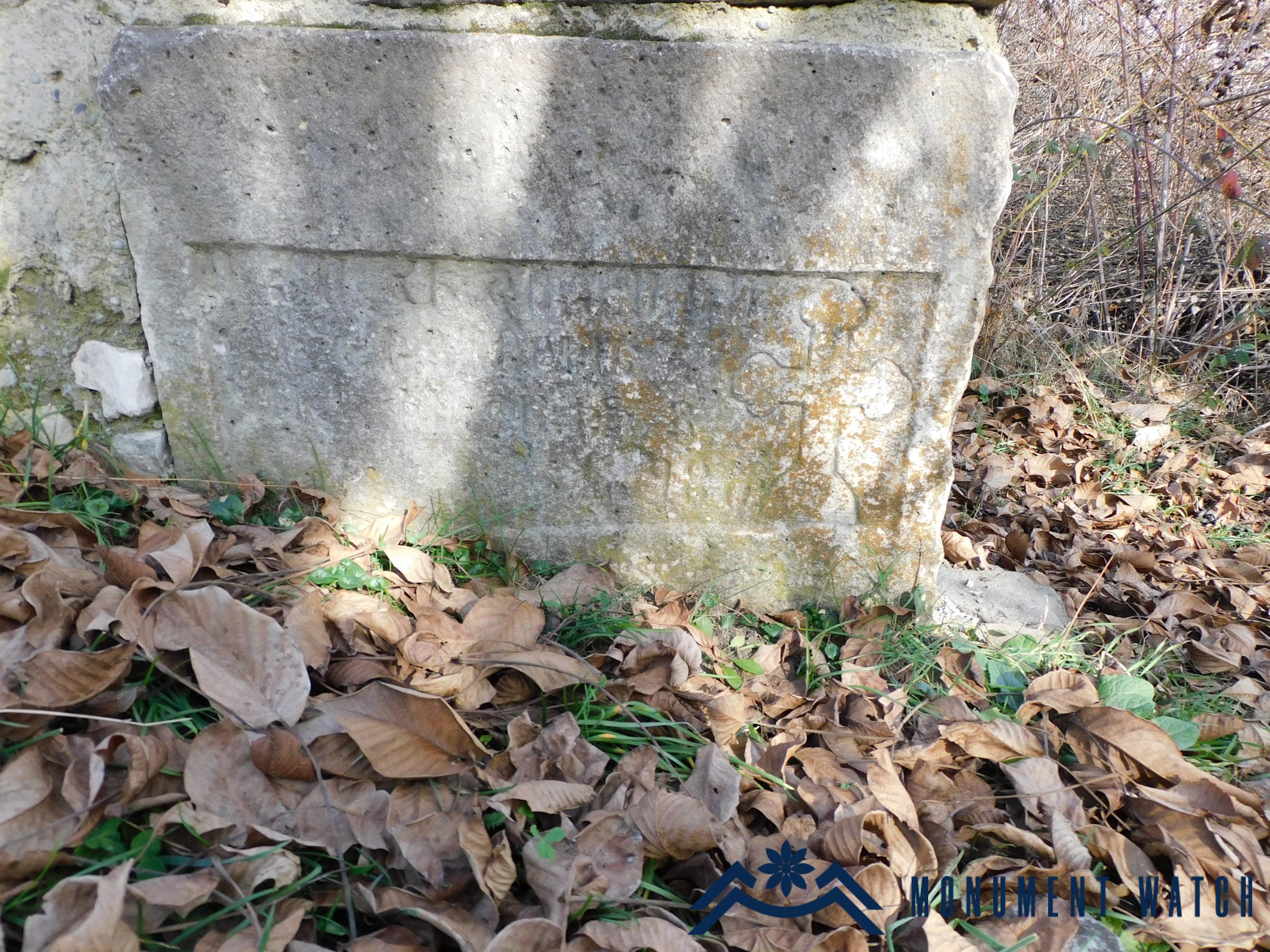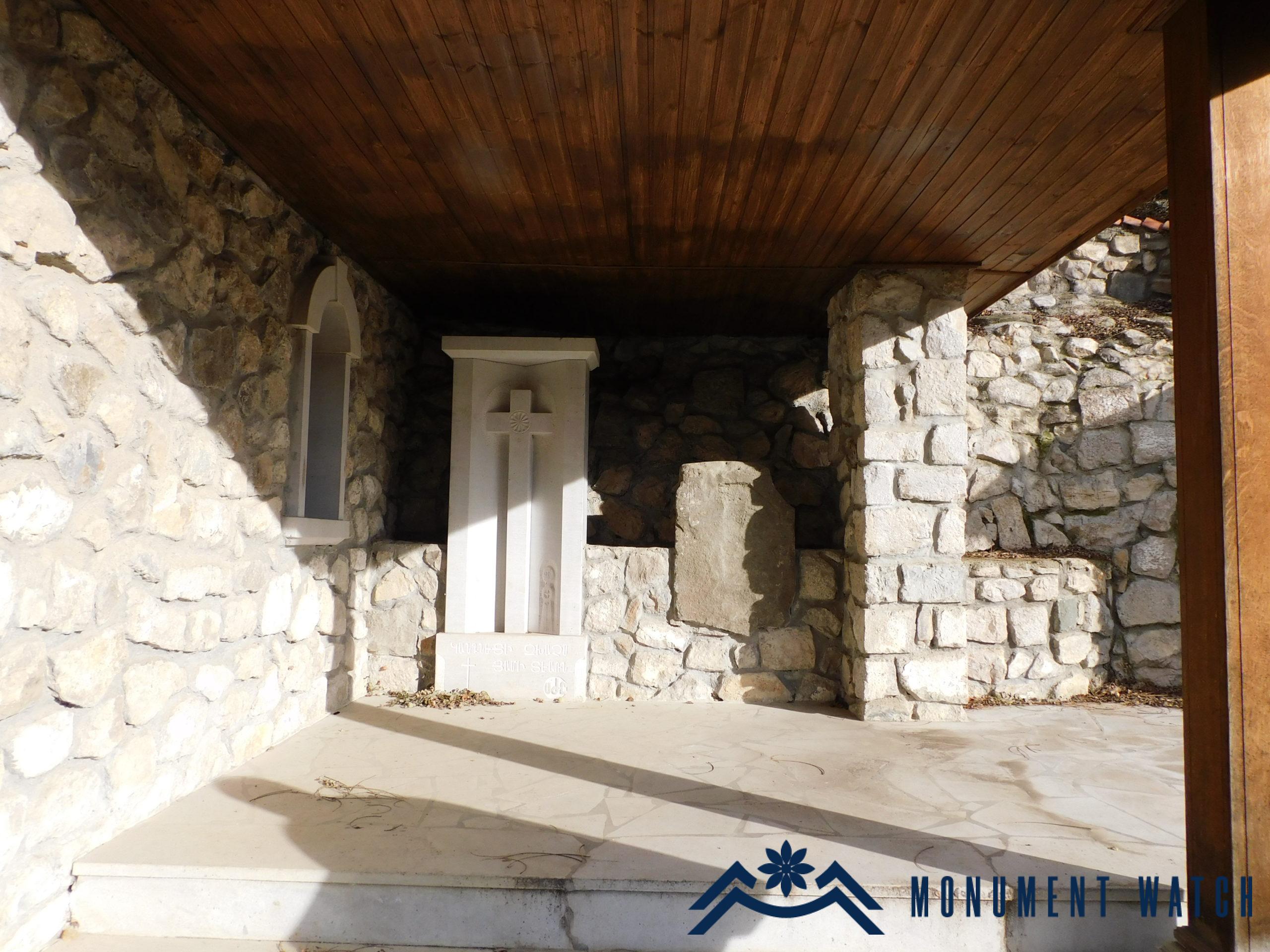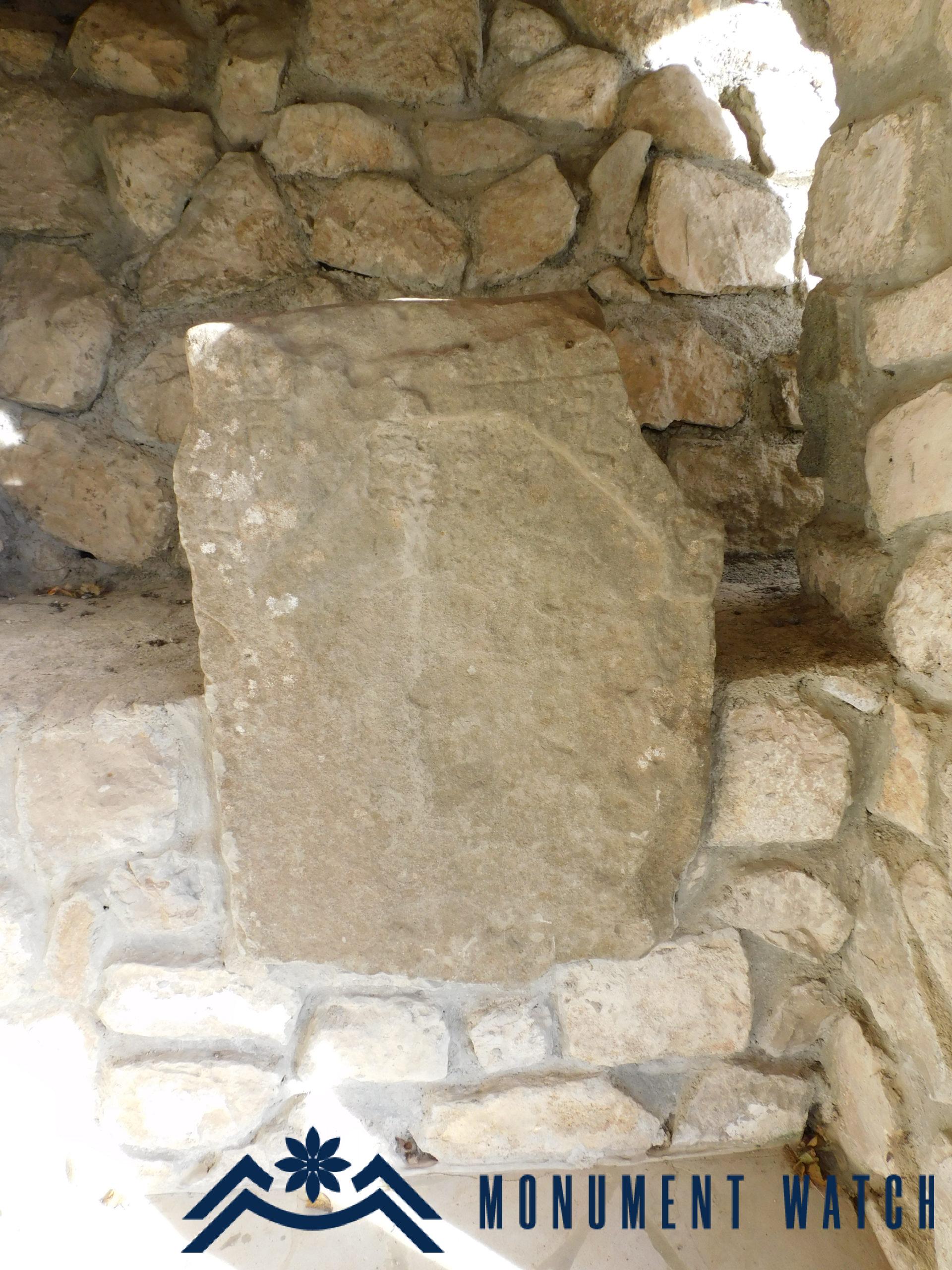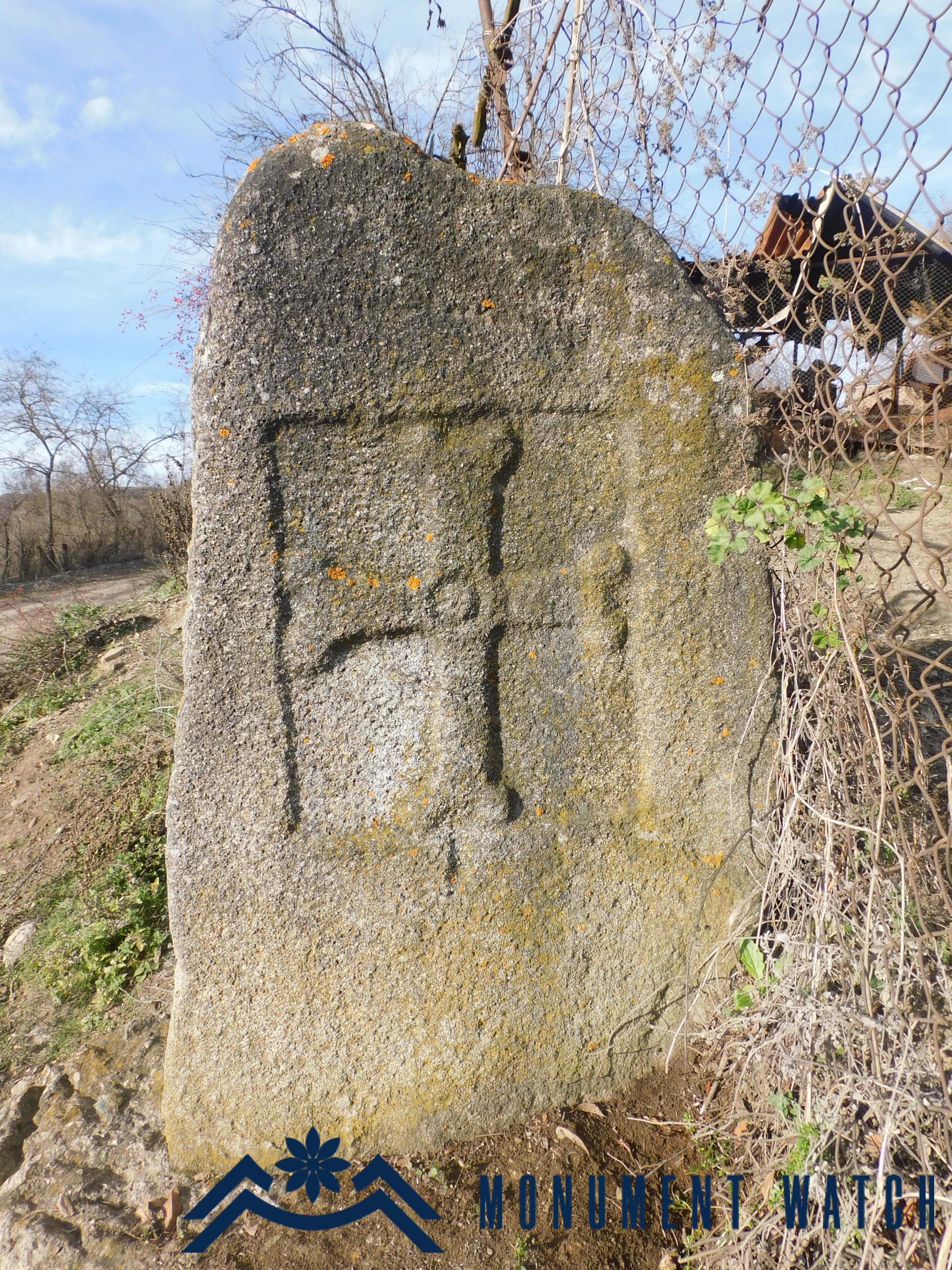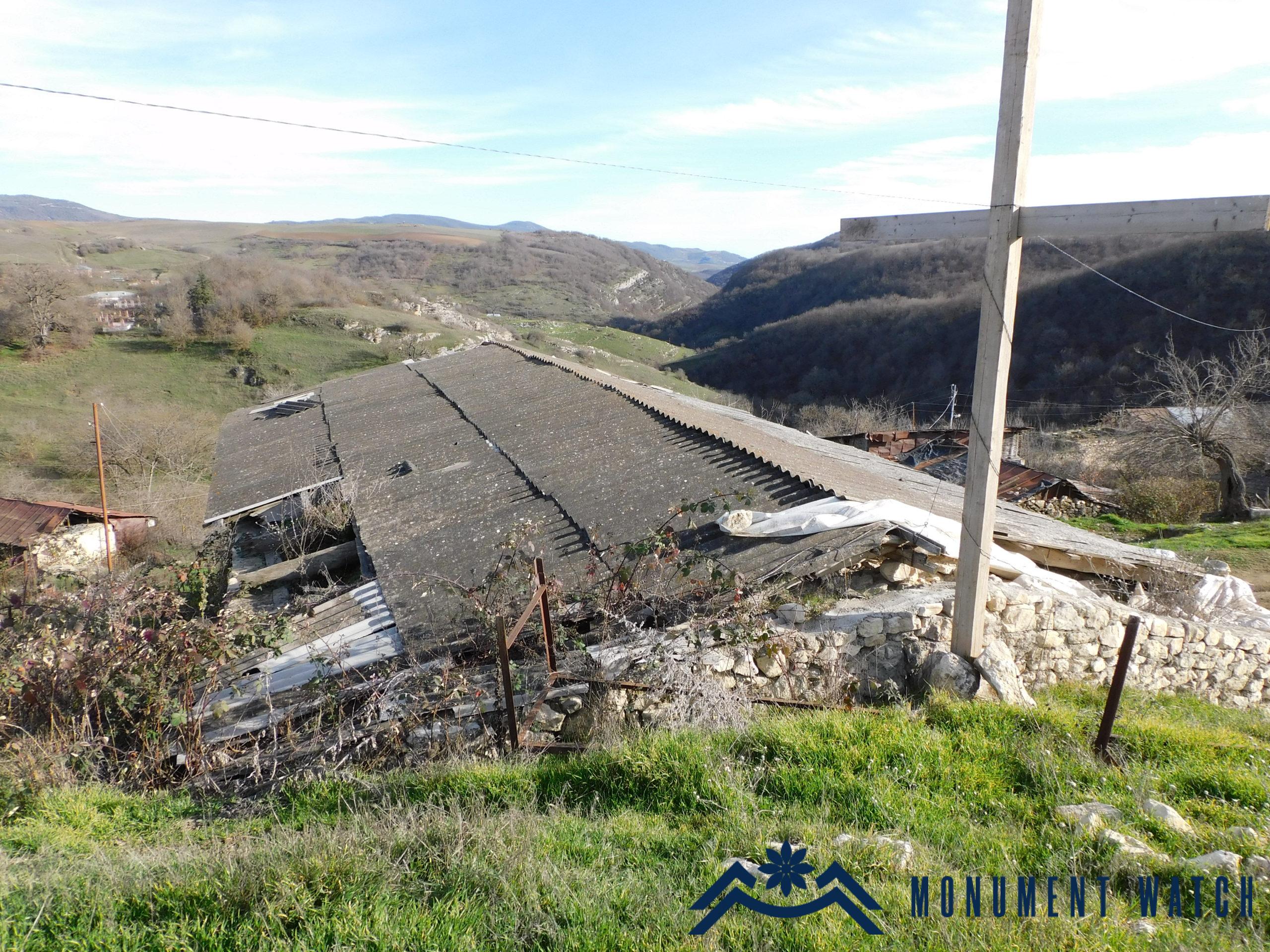Verin Sznek village’s Surb Hakob church, sanctuary, and khachkars
Location
Verin Sznek village is located in the Republic of Artsakh's Askeran region. Surb Hakob Church is located on the village's western outskirts (Fig. 1).

Historical overview
There is no information available about the church's history. Makar Barkhutareanats only mentions the village's Surb Astvatsatsin church: "The church is Surb Astvatsatsin, and it is made of stones"(Barkhutareants 1895, 101).
Architectural-compositional examination
The church is a rectangular single-nave hall. It is made of rough and small stones, and lime mortar, and only the entrance stones, church cornerstones, and window frames are lined with polished stones (Fig. 2). The church's only entrance is on the south facade. The church is situated on a steep hillside on the west side. The windows on the other facades are small, except for one large and wide window near the entrance. The latter is supported by the prayer hall's longitudinal walls. It is worth noting that the door's facade inscription stone is located on the entrance's left wall (Fig. 3). The interior of the church is vaulted. The inscription on the lintel says, "The church's construction began in 1882. It was built with the financial means and honest earnings of Avetis Aghabek, or Sargis Yakobian Dovlateans, a Verin Sznek villager. Bishop Grigor consecrated the church in 1885". According to the inscription, construction began in 1882 and was completed in 1885. Since the current entrance is different and does not correspond to the lintel, the lintel inscription may refer to the older building of the Surb Hakob church, which was rebuilt. Such reconstruction could have been carried out at the beginning of the twentieth century, before the establishment of Soviet rule (Fig. 4).
The village sanctuary is about 80-100 meters north of Surb Hakob Church. Here we can see a unique "holy place" (Fig. 5) made of two cross-sculptured tombstones placed vertically and a third tombstone placed horizontally on top of them, to which the construction's inscription was added. "This chapel was built as a memorial to Eghazar Shakaryants in 1910."
In the village's territory, there is also a small khachkar park, which has recently been improved and included under the cover, becoming a new sanctuary (Figs. 6, 7). The 9th-10th century khachkar (Fig. 8) is particularly noteworthy; the cross with two-lobed wings was obtained by removing the back side of the rectangular tabernacle.
The condition before and after the war
Even though the church was not damaged during the Artsakh wars, it is in disrepair, with cracks in the walls and grass on the roof. During the Soviet era, when the building was used for economic purposes, the gable roof was replaced with a new asbestos covering (Fig. 9). It is currently in a half-ruined state.
Following the 44-day war in 2020, the village has become cross-border, with enemy positions 600-800 meters away. The village is under attack from Azerbaijani positions, as are the church and the sanctuary.
Bibliography
Our information about the church, sanctuary, and khachkars is based on the monument certificate prepared by the Ministry of Education and Culture of the Republic of Artsakh, as well as photographs taken by our team.
- Barkhutareants, 1895–Barkhutareants M., Artsakh, Baku, Aror.
Verin Sznek village's Surb Hakob church, sanctuary, and khachkars
Artsakh
